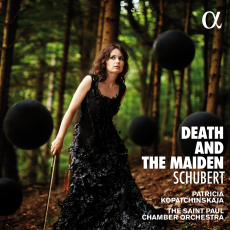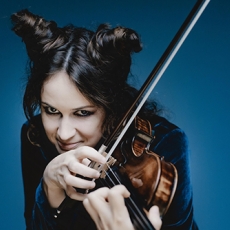Patricia Kopatchinskaja - Schubert: Death and the Maiden - BBC Music Magazine
This must have been an enthralling concert. It’s almost impossible to imagine Schubert’s Death and the Maiden in a string orchestral arrangement better played, with Kopatchinskaja a dynamic leader of a group of vertiginous brilliance. But this isn’t just the quartet: in a ‘collaborative exploration’, movements are interleaved with pieces from Byzantine Chant to Kurtág via Dowland.
Firstly, the quartet: despite a wonderful range of colours, details in an en masse performance are bound to be less sharply-etched. While there is a thrill to the deep bass underpinning, the first and last movements feel too well clothed, the raw pain of the original swaddled in velvet cloth. If the final Presto is as swift as any quartet, the opening Allegro feels overburdened.
Nörmiger’s 1598 Toden tanz makes a robust overture, evoking the Medieval tradition of the danse macabre, drawn on by Schubert’s poet Matthias Claudius. A link is made between the pavane-like used of the lied in the Andante, and Dowland’s grave Pavan (from Seven Teares), feverishly expressive in Kopatchinskaja’s hands. The Andante benefits from judicious alternation between tutti and solos, achieving a barely-there pianissimo which almost elides into the tortuous suspensions of Gesualdo’s Moro, Lasso, Al mio duolo, a disturbing, curdling effect. A string-quartet Trio of sweet simplicity contrasts with a flashing, aggressive Scherzo. Kurtág’s hazy Ligatura-Message to Frances-Maria sounds as if Schubert’s saddest music had seeped out of the barlines and started flowing backwards. Kopatchinskaja delivers his gutteral crisis, Ruhelos, with a snarl from voice and violin: now that is an utterly convincing way into the final Presto.

